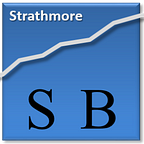Show me the Money (Part I): The Difference between Profit and Cashflow
It is getting to that time of the year when you are beginning to analyse your business’ performance for the past twelve months. Did you just break even? Was it an election-induced loss-making year? Or are you among the few that actually made a profit this year?
Whichever group you fall into, one conundrum that many entrepreneurs face is understanding where the money they generate ends up. They wonder “How could I have made a profit and yet have no cash?” Or “How could I have made a loss yet I’m awash with cash?”.
That cash doesn’t equal profit isn’t something easily intuitive. But it is a crucial concept to grasp for any entrepreneur. Not being able to distinguish between the two may lead you into a fatal spiral.
Let’s look at major differences.
- Cost of Goods Sold (COGS) vs Stock purchase
When calculating profitability, you obviously only deduct the cost of pieces (services) sold from your revenue, or so-called Cost of Goods Sold (COGS). But you have actually spent more cash than just COGS — you have also spent on the unsold stock that you still have left. You may have the profit (on paper) but not necessarily the cash. - Payables
If you purchased goods on credit (thereby holding on to the cash for the time being), you still owe your supplier; so the cash you have is not all yours. The cash you owe your supplier is called a Payable. Regardless of how you bought the goods (cash or credit), the COGS is still the same; so it (cash or credit) has no impact on your profit. However, purchasing on credit clearly improves your cash flow. You may have the cash, but not necessarily the profit. Or you may even be making a loss but still have the cash. - Receivables
A receivable is the cash your customer owes you for goods/services delivered. It is the opposite of a payable. Its impact on your cash is also the opposite of the impact of a payable, i.e. it reduces your cash flow. However, its impact on profit is the same as a payable, i.e. it has no impact because whenever you sell on credit, you still recognise the sale as revenue. You may have the profit but not the cash.
Many bigger public companies inflate their sales in their annual reports by offering credit sales to their customers without much thought on if/how it will be collected later on. - Depreciation
For accounting purposes, buying productive assets (equipment, machinery, vehicles and buildings) is not considered a one-time expense to be booked today. As these assets are meant to serve the business for a certain period of time (the ‘useful life’ of the asset), businesses are required to spread the cost of the purchases over the period the asset will be in use. This is the concept of depreciation. There are various ways to calculate depreciation, but the simplest is where you simply divide the cost of the asset by the number of months it is meant to function. This is your monthly depreciation cost. This is a calculated cost month-on-month, but no money is actually paid out (as it was paid out at the beginning). Therefore, depreciation impacts your profits (month-on-month) but not your cash position. You may be profitable and not have cash. Or you may have made a loss and still have cash.
If you disregard depreciation, you are overestimating your profitability. Or your business may even be making losses. If one day the equipment breaks down and you may realise that your business hasn’t been earning enough to replace it, let alone earned a return on the investment for its owner.
Learn more about profit vs cashflow and other similar critical business concepts that could transform your business by joining our Advanced Entrepreneurship Program. Registration for the next intake on Wednesday, 6 December 2017 is still open. Enroll today.
Subscribe to our newsletter to receive similar articles, tips, and advice in your inbox.
